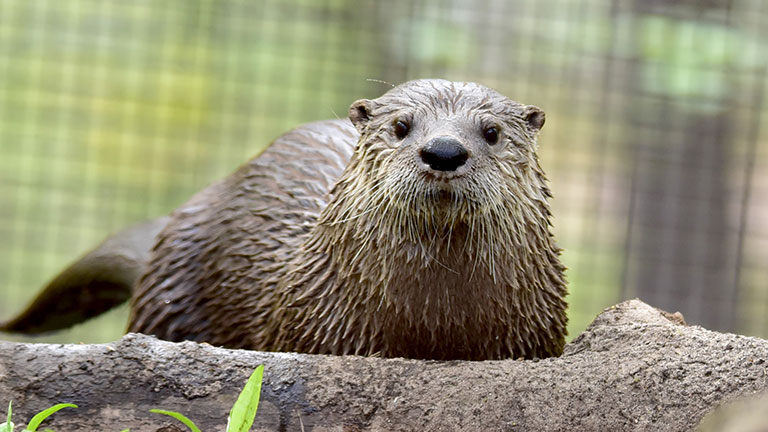May 27, 2020
The video below was made to show what otter training looks like from the trainer’s perspective. Here, I’m working with Heather the otter. Otters Heather and Sara worked with me using free contact (no barrier between us) while Sailor, I’m still working protected contact training with (we have a barrier between us). The otters are taught with both a verbal cue and a hand signal for the same behavior. In my right hand I have a clicker which I use to let her know she performed the behavior correctly. I also use my right hand to signal a behavior. I use my left hand to give her her food reward for doing a correct behavior. Our otters are taught through positive reinforcement. We never punish them or ask them to do something they don’t want to do. Participating in training is their choice.At the beginning, I come out with a target pole. I ask her to go in the water and to touch her nose to the pole. I say “target” and then I click the clicker to let her know what she did was correct. I then give her part of her diet (fish and meat) as a reward. Next I tell her “land” and have her come out of the water. I then tell her “up” and have her get up on her “station stump”. While she is on here I ask her for different behaviors such as targeting to my hand, waving, asking for her to touch her left and right paws to my finger, and I say “stand” to get her to stand up on her back legs. By asking her to do these things helps me see different parts of her body more closely and to make sure she is healthy. Next I say “down” for her to come off her stump and then say “back”and hold out two fingers above her. This is her cue to lay on her back and hold the position as long as I keep my fingers up. This lets me check out her underside. She is also trained to let me touch her paws as well while she is in this position.
Next I tell her “water” and have her get in the pool. I then tell her “back” which has her swimming on her back, and “spin” where she will do a barrel roll in the water. Then I tell her “rock” which has her climb up on top of the rock formation and dive into the pool. These three water behaviors are natural otter behaviors that I captured them doing naturally and just added a cue to get them to do the behavior when asked to.
Next I tell her “land” and have her come back out of the water and say “up” to get her back on her stump. Then I have someone on the other side of the otter pool glass hold up Heather’s shape, a red circle, and then I ask Heather to target to that shape. Each of our otters have a certain shape and color that I have them target too. Sara’s is a yellow square and Sailor’s is a blue triangle. They all know their own shape/color. This behavior also led to several studies with RIT.
Once Heather finished targeting to her shape, I have her go back on land and bring her to the recycling bin. I hand her a soda bottle and tell her to “grasp” which she holds an object in her paws. Then I point to the bin and she drops the bottle in.
This is not a “trick” behavior as otters naturally grasp objects. I had her do this particular behavior to send a powerful and important message when viewing our otter training demo by having our otters tell you that recycling is a very important thing that you can do to help protect river otters.
Finally I have her go back up on the stump and tell her to “wave”. This is our final behavior and this is how I end the otter training demos. Then I get her to go back in the water where I give her a “jackpot” reward and give her a few pieces of her diet and then let her know the training session is over by saying “all done” and doing the hand signal.
Zoo Keeper Catina Wright

